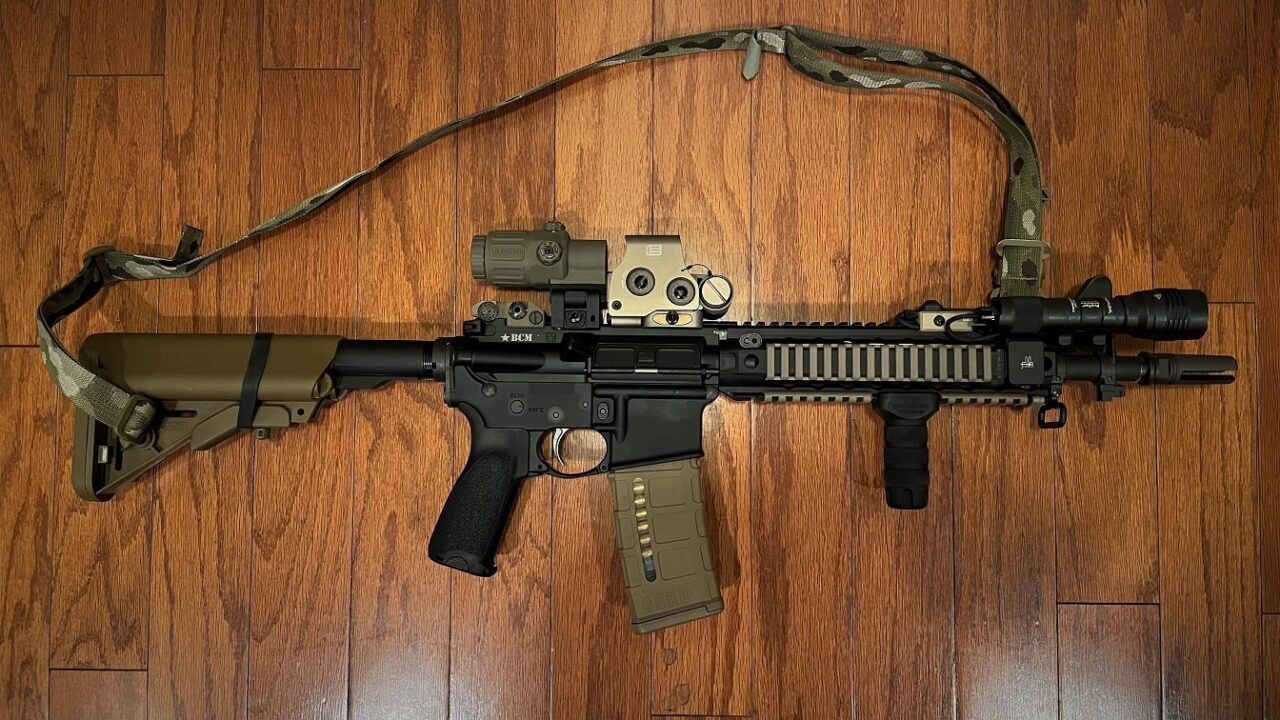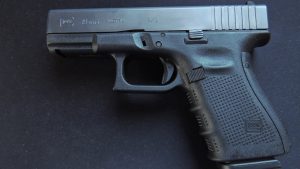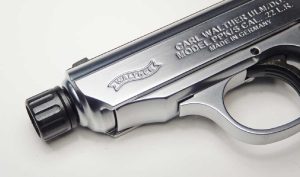Until U.S. warfighters carry the AR-15 into combat and actually wage war it is simply wrong to label it a weapon of war.

As Vice President, Joe Biden once said,”[If] you want to keep someone away from your house, just fire the shotgun through the door.”
Not the best advice, of course, but Biden has long suggested that a shotgun would be his preferred choice for self-defense.
Biden, who has admitted to owning two shotguns, has also called for a ban on AR-style semi-automatic rifles while describing those firearms as “weapons of war.”
In addition to offering what should only be described as responsible advice on the handling of a firearm, President Biden has also made it perfectly clear when discussing gun control that he doesn’t know much about history.
In addition to making the repeated – and entirely untrue – statement that the Second Amendment wouldn’t have allowed citizens to own cannons, Biden apparently forgets that shotguns were a weapon of war.
U. S. soldiers were actually issued with a number of pump-action shotguns, notably the Winchester Model 1897 – and those firearms quickly earned the infamous moniker “trench shotgun.” The six-shot, single-barreled trench shotguns were equipped with a bayonet and loaded with 12-gauge buckshot.
“The trench shotgun is America’s greatest contribution to the war,” Peter P. Carney, the then-editor for the National Sports Syndicate, wrote in 1918. “Through the expert handling of the trench shotgun the Germans learned that the Yanks were coming. At the first taste of the pellets the Germans began to whine and then to write notes calling us ‘barbarians,’ Germany, too!”
The shotguns were first employed in combat at the Battle of Belleau Wood in June 1918, where they were used to literally mow down the enemy. The weapon proved so devastating that on September 15, 1918, the German government officially protested its use.
It was 50 years later that the U. S. military was involved in another war – that one in Southeast Asia – where the M16 was finally overcoming its unfortunate baptism of fire, including jamming issues.
The Armalite design, under the direction of Eugene Stoner, proved to be a revolutionary weapon. It offered select fire, was lighter than the M14 that it replaced, and fired a smaller cartridge than even hunting rifles of the era.
The weight and cartridge size also made it ideal for the civilian market, but with a notable difference. Whereas the military’s M16 was select-fire – with full-auto and burst fire modes – the civilian AR-15 has always only been offered as a semi-automatic firearm.
The AR-15 – in many respects – is no different in terms of capabilities than many other civilian firearms, yet because of its appearance it is erroneously described as a “weapon of war.”
The term was introduced by gun control advocates to confuse the matter.
Of course, it overlooks the fact that slings, bows, clubs, and swords were all employed as weapons of war at various times in history. Yet during the era of the American Revolution, there was virtually no line between civilian and military firearms – and in many cases, the long guns carried by the American patriots were vastly superior to the Brown Bess muskets used by the British Army, considered at the time among the very best soldiers in the world!
The Founding Fathers certainly knew this fact when drafting the Second Amendment.
That line between weapons of war and civilian firearms remained blurred throughout the 19th century. There were certainly times when the U. S. military could be described as outgunned.
General George Armstrong Custer proved to be a bad military leader when he led his men into the Battle of Little Bighorn on June 25, 1876. It wasn’t just his poor leadership, however. What is notable is that virtually every trooper in the 7th Cavalry fought with the single-shot, breech-loading Springfield carbine and Colt revolver, while Sitting Bull’s Lakota warriors were armed with Henry, Winchester, and similar lever-action repeating rifles. The U. S. Cavalry armed with the era’s “weapons of war” were defeated soundly by an opponent carrying civilian rifles of the day.
It wasn’t actually until the passage of the National Firearms Act in 1934 that there were even any restrictions on what firearms the general public could own. Until that time, there was still no line between what was a weapon of war and what a civilian could own.
Today, however, it is not only much clearer, but one of a legal issue. Due to the NFA, machine guns are highly regulated, while no automatic weapon made for the military can be owned by civilians – with the exception of licensed dealers who regularly sell to the military and law enforcement.
That fact also can’t be overstated, as the U. S. military uses firearms that have features and functionality that the civilian models do not.
The U. S. Army recently adopted the M5 select-fire infantry rifle and M250 automatic rifle – which replaced the M4 carbine and M249 light machine gun.
Those are the true weapons of war, and will never be available for civilian sales, while the AR-15 is simply a civilian firearm that looks somewhat menacing. Until U. S. warfighters carry the AR-15 into combat it is simply wrong to label it a weapon of war.






